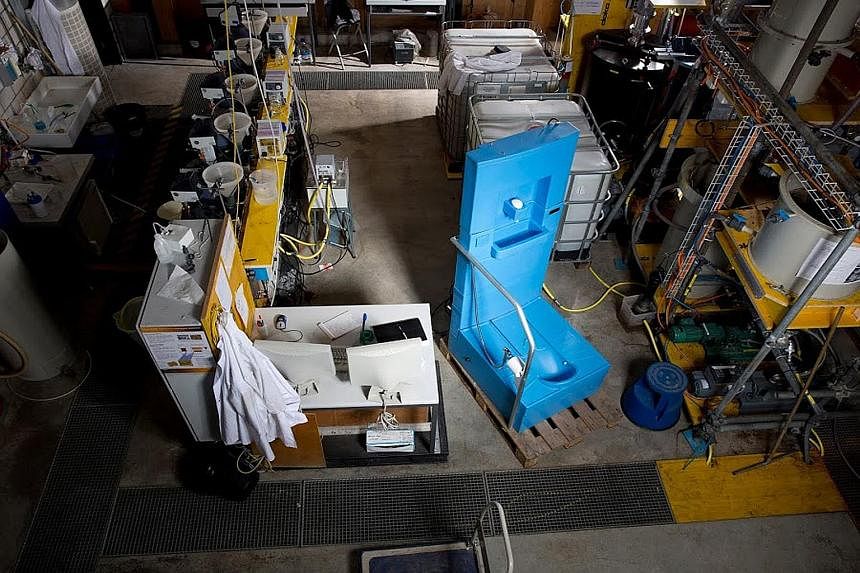This story was first published on June 20, 2015
SIX billion people worldwide own a mobile phone, but only 4.5 billion have decent toilets.
To address this problem, Swiss researchers from aquatic research institute Eawag and the Vienna- based design firm EOOS have designed a new kind of toilet, called Blue Diversion.
It was designed as part of the "Reinvent The Toilet Challenge" set by the Bill & Melinda Gates Foundation.
Mr Christoph Luthi, project manager at Eawag, said: "In many locations, infrastructures such as sewers and water treatment plants simply don't exist, and there is often not enough water available for flushing.
"We wanted to design a radically different type of toilet, without the need for hefty infrastructure, at the same time as offering spotless hygiene."
Blue Diversion resembles a squat toilet made out of blue plastic, with two holes: one for urine and the other for faeces.
"The purpose of separating these is to facilitate the elimination of pathogens and save water," Mr Luthi explained.
Through a nitrification process, the urine is converted into fertiliser on site.
However, what makes it radically different is the integrated independent water circuit.
Mr Luthi said: "We have fitted our toilets with a shower head to clean the pan and also ensure anal hygiene, as practised in a great number of countries, as well as a sink to wash the hands.
"Whenever the water flows, a valve automatically shuts off the urine and faeces tanks. This enables almost all of the liquid to be recuperated."
The dirty water is disinfected by a built-in gravity-driven membrane filter. A solar-powered electrolysis system then produces chlorine, preventing undesirable bacteria from forming.
In 2013, the first prototype of Blue Diversion was successfully tested in Uganda. A new prototype is now being tested in Kenya.
Blue Diversion was awarded the 2014 Prize for Innovation by the International Water Association.
Said Mr Luthi: "Mass production will reduce the cost. The objective is to achieve a selling price of US$500 (S$667) per appliance, for a projected lifetime of 10 years."
BERTRAND BEAUTE/24 HEURES (SWITZERLAND)

